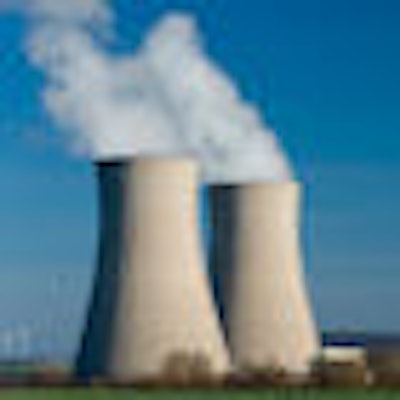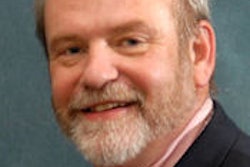
What would a world without molybdenum-99 (Mo-99) look like? That's a question U.S. nuclear medicine physicians are contemplating as limited Mo-99 supplies decay by half every 66 hours.
With last month's shutdown of Atomic Energy of Canada's (AECL) National Research Universal reactor in Chalk River, Ontario, the only producer of the parent isotope of technetium-99m (Tc-99m) in the Americas, many nuclear medicine physicians are quickly modifying their clinical plans.
Particularly affected are those who depend on Lantheus Medical Imaging of North Billerica, MA. AECL supplies Lantheus with much of the Mo-99 it uses for a range of products, including the Cardiolite technetium sestamibi cardiac imaging agent and TechneLite technetium-99m generators.
"So far we're not affected," said Dr. Barry Siegel, nuclear medicine chief at the Mallinckrodt Institute of Radiology in St. Louis, which receives its Tc-99m from Covidien of Hazelwood, MO, which, in turn, is supplied by a reactor in the Netherlands. "In the past we've managed to eke by, cutting back the schedule. However, my sense of the disruption this time is that people in the past who have been able to patch things together are going to have trouble this time. This is a much more significant disruption than we've seen before."
And it's going to get worse, according to incoming SNM president Dr. Michael Graham, Ph.D., a professor of radiology and radiation oncology and director of nuclear medicine at the University of Iowa Carver College of Medicine in Iowa City.
"We're currently getting a little less than half the technetium that we used to get. And it's not distributed evenly. Some sites are fine, others have shortages," he said. "The Netherlands reactor shut down this week for maintenance and should be back up shortly, but they plan another extended maintenance in July. At that point, the only reactor [supplying the U.S.] will be South Africa, and there will be a severe shortage."
Due to its rural location, the University of Iowa normally gets two technetium generators a week, Graham said, but the recent loss of those shipments has forced the institution to reduce SPECT-based bone studies, obtain technetium from a radiopharmacy that is 60 miles away, and schedule scans on the weekends.
Vendors step up
The two main suppliers of technetium generators in the U.S., Lantheus and Covidien, have scrambled to deal with the crisis, which is extreme enough that the firms have agreed to cooperate to meet customer demand. Covidien is supplying generators to Lantheus radiopharmacies on a noncontract basis, according to Stephen Littlejohn, vice president of communications for Covidien.
In addition, Lantheus said that it is receiving Mo-99 from an alternative supplier, NTP Radioisotopes of South Africa, which has ramped up its production. Lantheus is also boosting production of thallium-201 in its cyclotrons and is currently operating at full capacity to meet the demand for this alternate cardiac imaging agent.
For its part, Covidien in a May 22 letter to customers said it was working to minimize the shortage's impact on patient care by placing additional orders for Mo-99 from other suppliers and maximizing the company's Mo-99 processing plant production. The company also highlighted recent upgrades to its Maryland Heights, MO, manufacturing facility, and added that it is expecting higher output from the High Flux Reactor in Petten, Netherlands.
Clinical options for now and later
What are the alternatives to SPECT studies with Tc-99m? One, recently in the news, looks promising but not imminent: A June 4 announcement by the U.S. Centers for Medicare and Medicaid Services (CMS) sparked hope among nuclear medicine physicians that fluorine-18 (F-18) sodium fluoride PET scans would soon be reimbursed, but historical precedent makes it unlikely that the proposed coverage will be ratified quickly. The cyclotron-produced radiopharmaceutical would be easy to come by; the CMS decision, however, is expected to take nine months.
"We want to do all our studies with F-18 instead of technetium, but we're not going to do it if we're not getting reimbursed. And if we're audited, will we be penalized? We need assurance in writing," said Dr. Alan Waxman, chief of nuclear medicine and imaging center co-chair at Cedars-Sinai Medical Center in Los Angeles.
Absent that assurance, Waxman's team has held several emergency meetings about the most efficient way to schedule studies without technetium. "A lot of our studies are cardiac -- we have a huge cardiac center. Instead of a Tc-sestamibi study, we are going back to the old days and doing thallium. It's a step backward in terms of stress and rest, but the results are excellent. We don't think the quality is compromised, it's just longer for the patient," Waxman said.
Another option is reducing the average technetium dosage of 25 to 30 mCi, Waxman advised. "We can use half the dose and scan someone longer," he said. "We're applying that model to just about every tec study."
Lung scans, too, can be economized. Cedars-Sinai does 200 ventilation and perfusion lung scans each month. Ventilation studies require nebulizers to be filled with 30 to 40 mCi of technetium, but only about 1 mCi is breathed in by the patient. An alternative is preperfusion ventilation imaging using xenon-133. "Multiply 200 patients times the number of millicuries of technetium that we'll save," Waxman said.
That doesn't appeal to Graham, who says his institution doesn't even have the xenon-133 apparatus anymore. "Its use is fading," he said. "There are a number of reasons why I think the aerosol imaging is better than xenon. With the xenon you get it all in on the first breath if the patient cooperates well, but the limitation is it's a one-shot deal. You typically get a single view of the lungs. If they don't cooperate that well, it's much more prone to problems. With the aerosol you get more views all around."
However, he agrees it's one way to economize on one of the least efficient uses of technetium, while still using approximately 6 mCi of Tc-99m for the perfusion portion of the study.
Other technetium-based studies that can use cyclotron-produced radiopharmaceuticals include parathyroid adenoma imaging, which can be done with thallium and iodine-123, and liquid gastric emptying, for which indium-111 can be used.
Ultimately, other modalities will have to fill in. Waxman stressed that his is an integrated imaging center where all modalities strive to "get the best answers we can for our patients. We'll find alternatives using MRI or CT."
But questions of expense and contraindication will come into play. CT angiography, for example, can evaluate the presence of pulmonary embolus, but in the case of allergy to the contrast agent or renal problems, "those are patients we continue to study. Those patients are not going to have much of a choice. We either medicate them heavily to avoid allergic reaction or forego the study," Graham said.
A long-term solution
Faced with this prospect, most nuclear medicine physicians make an emphatic demand: Find a way to produce Mo-99 in the U.S. "You need to tell the government to get some commercial guys fired up to build a reactor for us here in the U.S.," Waxman said.
Two plans, at least, are under way with the University of Missouri Research Reactor (MURR) in Columbia and Babcock & Wilcox (B&W) of Lynchburg, VA. In April, MURR announced "a plan to make the school the first domestic producer of a nuclear isotope used in medical testing," with funding details for the $40 million facility to come this summer. MURR could begin producing Mo-99 as early as 2012. Creating the isotope involves low-enriched uranium, the most radioactive substance yet handled at the reactor.
"The reactor's already in somebody's backyard, so the problem of siting a new reactor is lessened. They will have to file another environmental impact statement," said Graham. "People regularly point out that the reactor is across from the football stadium, but I think that's unlikely to be an issue."
Meanwhile, Babcock & Wilcox announced a deal in January 2009 with Covidien to partner in applying a new type of reactor technology to the production of radioisotopes for medical use. The B&W reactors also use low-enriched uranium and would be far smaller than standard nuclear reactors, operating at a 200 kW power level (compared to 10 MW to 40 MW for conventional reactors) and measuring 2 ft in diameter and 4 ft in height.
But building even a small nuclear reactor takes time, and until then, nuclear medicine physicians have to deal with the here and now. Graham emphasized that although the current crisis will constrain practitioners, nuclear medicine will continue to fulfill its role in the imaging armamentarium.
"This whole shortage is going to be a problem for quite a long time, but nuclear medicine will be open for business," he said.
By Alexandra Weber Morales
AuntMinnie.com contributing writer
June 11, 2009
Related Reading
CMS to consider paying for F-18 PET bone scans, June 5, 2009
Canada medical reactor shutdown may be extended, June 5, 2009
MDS advocates Maple reactor activation, June 1, 2009
AECL reactor down 'at least three months,' May 29, 2009
MDS Nordion opens new FDG facility in Belgium, May 28, 2009
Copyright © 2009 AuntMinnie.com




















